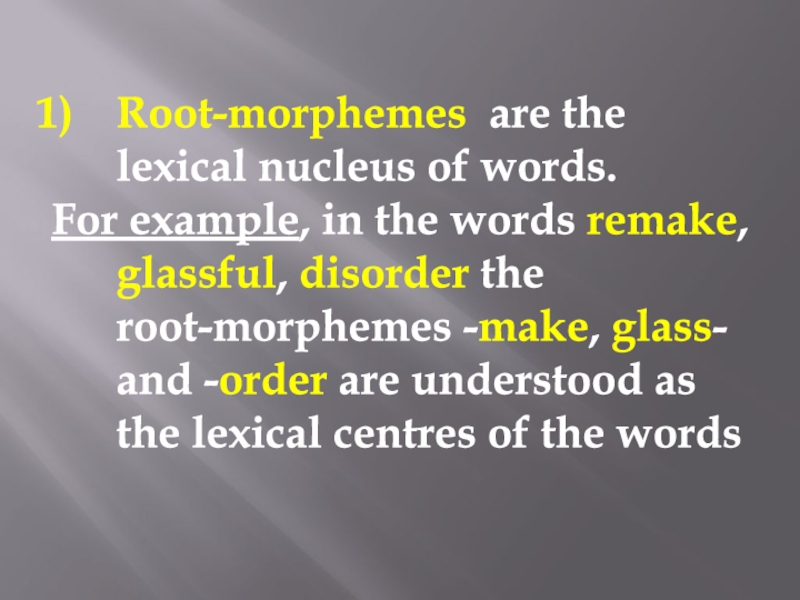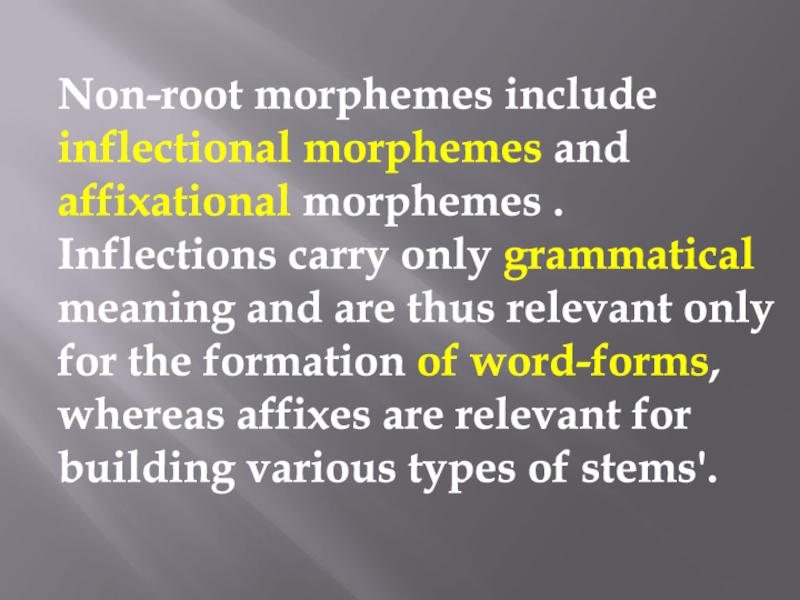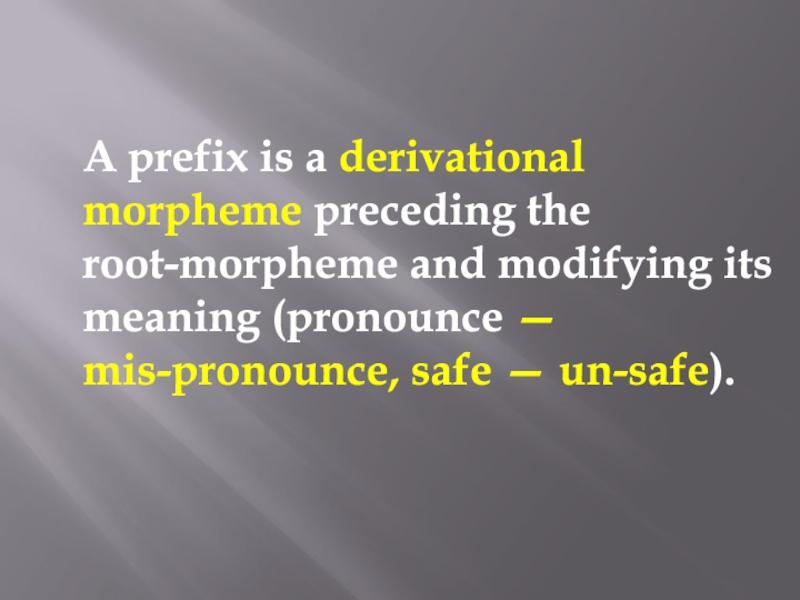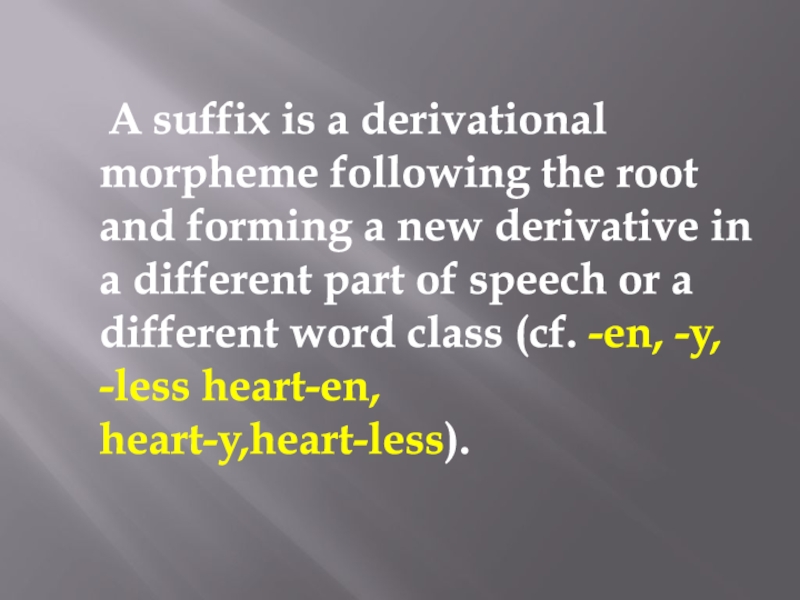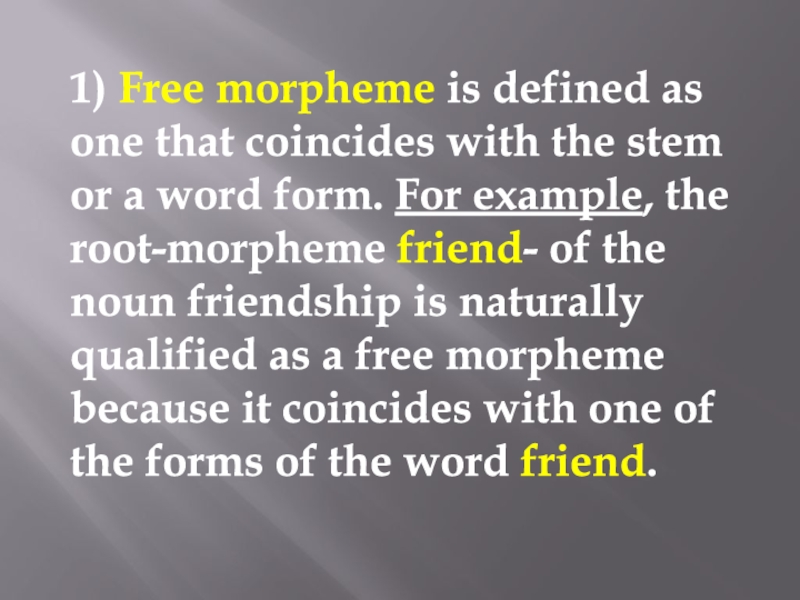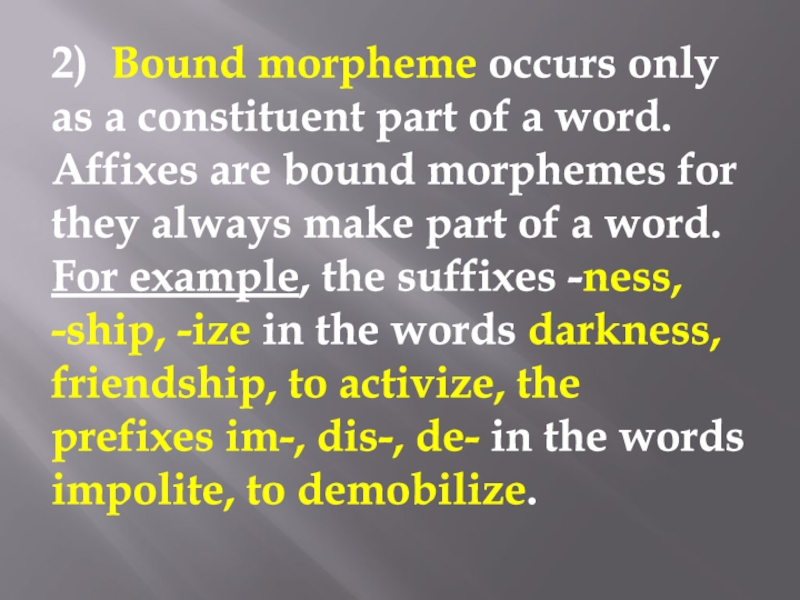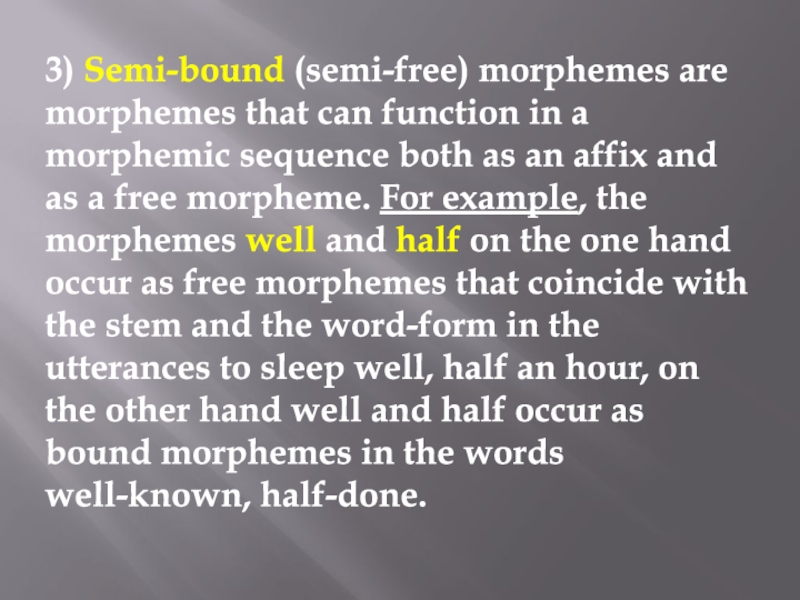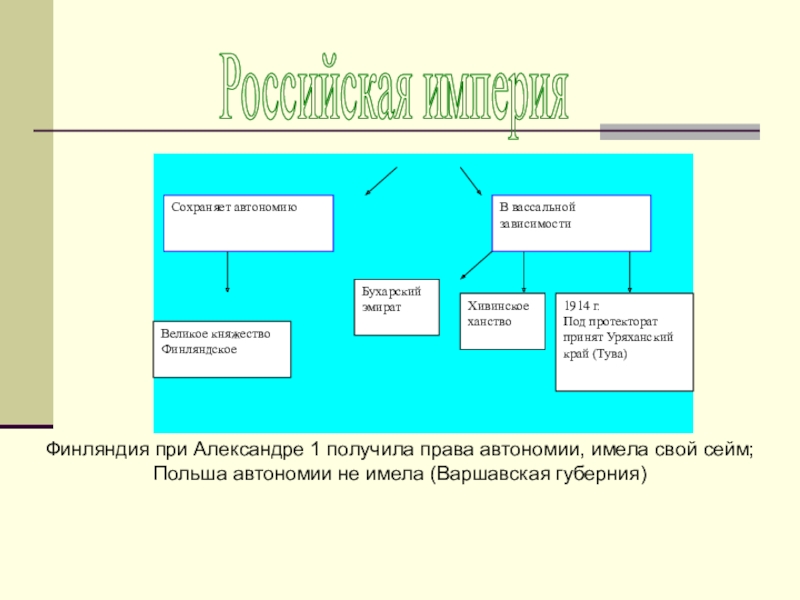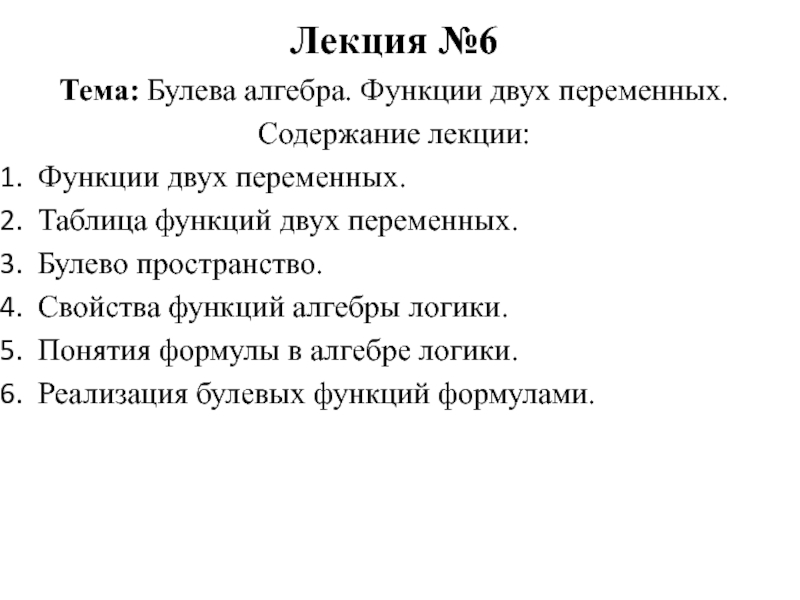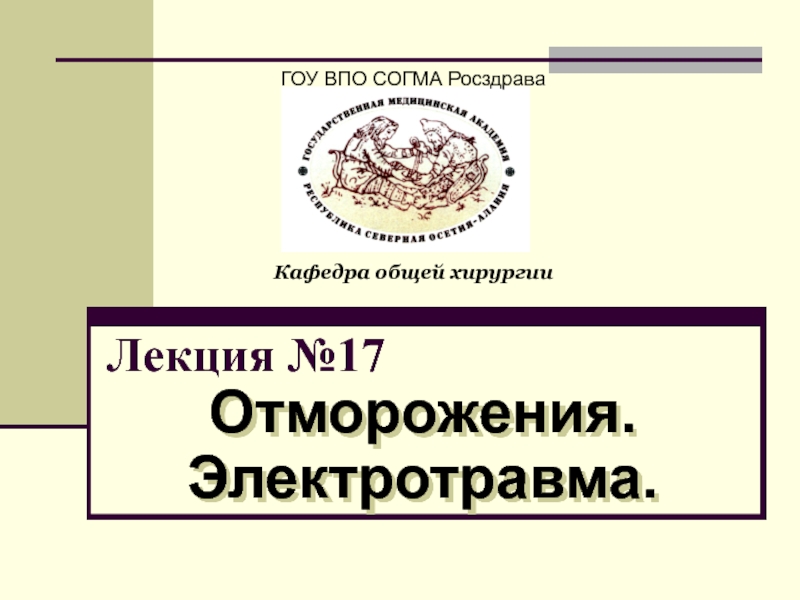Разделы презентаций
- Разное
- Английский язык
- Астрономия
- Алгебра
- Биология
- География
- Геометрия
- Детские презентации
- Информатика
- История
- Литература
- Математика
- Медицина
- Менеджмент
- Музыка
- МХК
- Немецкий язык
- ОБЖ
- Обществознание
- Окружающий мир
- Педагогика
- Русский язык
- Технология
- Физика
- Философия
- Химия
- Шаблоны, картинки для презентаций
- Экология
- Экономика
- Юриспруденция
Morphemes Classification of Morphemes
Содержание
- 1. Morphemes Classification of Morphemes
- 2. Words consist of morphemes. The term 'morpheme'
- 3. Morphemes occur in speech only as constituent
- 4. In the word-cluster please, pleasing, pleasure, pleasant
- 5. Root-morphemes are the lexical nucleus of words.
- 6. Non-root morphemes include inflectional morphemes and affixational
- 7. A prefix is a derivational morpheme preceding
- 8. A suffix is a derivational
- 9. 1) Free morpheme is defined as one
- 10. 2) Bound morpheme occurs only as a
- 11. 3) Semi-bound (semi-free) morphemes are morphemes that
- 12. Скачать презентанцию
Words consist of morphemes. The term 'morpheme' is derived from Greek morphe — 'form' + -erne. The Greek suffix -erne has been adopted by linguists to denote the smallest unit (cf.
Слайды и текст этой презентации
Слайд 2Words consist of morphemes. The term 'morpheme' is derived from
Greek morphe — 'form' + -erne.
The Greek suffix -erne
has been adopted by linguists to denote the smallest unit (cf. phoneme, sememe).Слайд 3Morphemes occur in speech only as constituent parts of words
but not independently. Morphemes may have different phonetic shapes
Слайд 4In the word-cluster please, pleasing, pleasure, pleasant the root morpheme
is represented by the phonetic shapes:
[pli:z-] in please, pleasing;
[ple3-] in pleasure;
[plez-] in pleasant.

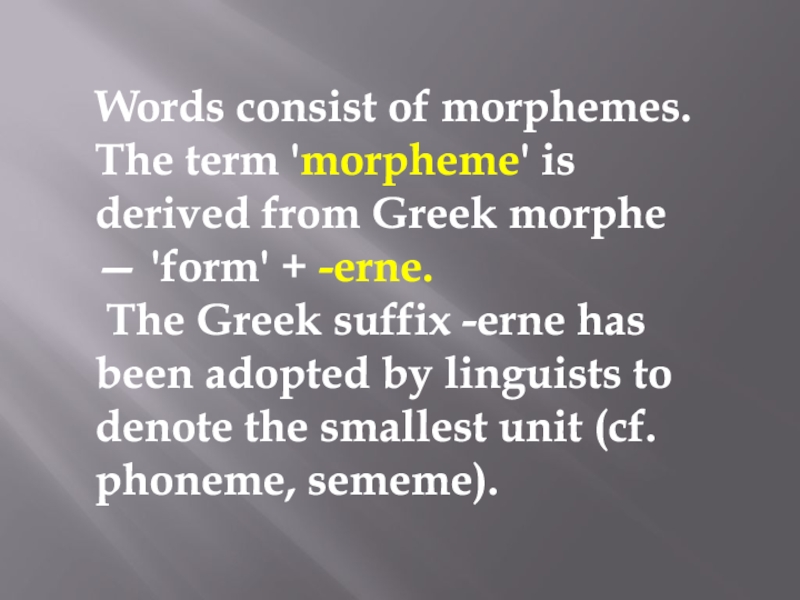
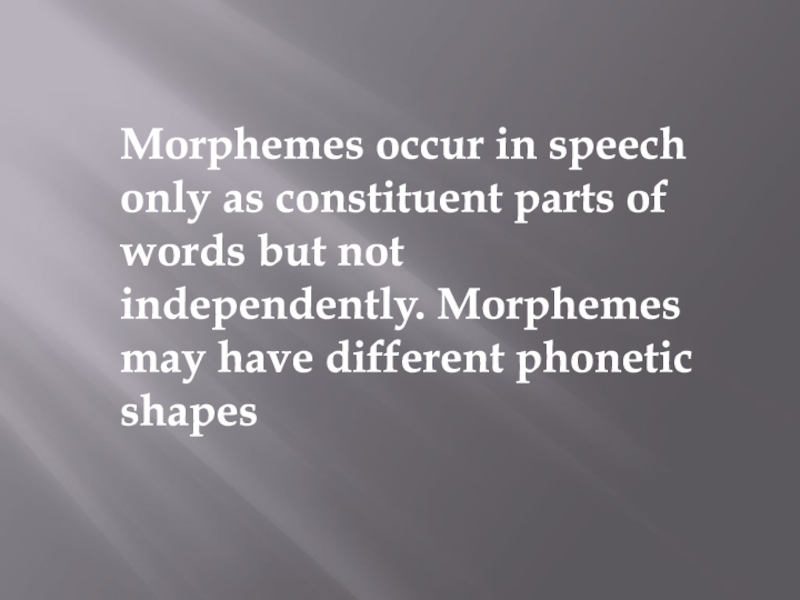
![Morphemes
Classification of Morphemes In the word-cluster please, pleasing, pleasure, pleasant the root morpheme is In the word-cluster please, pleasing, pleasure, pleasant the root morpheme is represented by the phonetic shapes: [pli:z-]](/img/tmb/6/581145/5ef4242fd4343b5daad12ea743aee371-800x.jpg)
